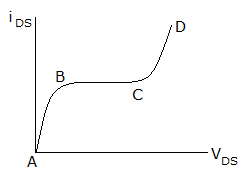
Electronics and Communication Engineering Questions and Answers
Prepare for your Electronics and Communication Engineering exams/aptitude tests, assess your knowledge of electronics and communication equipment with these ECE questions and answers.

Prepare for your Electronics and Communication Engineering exams/aptitude tests, assess your knowledge of electronics and communication equipment with these ECE questions and answers.

AB
BC
CD
BD
Correct answer is B
Small signal amplifier operation is in constant current region of characteristics.
In a bipolar transistor, which current is largest
collector current
base current
emitter current
base current or emitter current
Correct answer is C
Emitter current is larger, collector current is slightly less than emitter current and base current is very small.
the forward current is very high
sharp breakdown occurs at a certain reverse voltage
the ratio v-i can be negative
there are two p-n junctions
Correct answer is B
When reverse voltage equals breakdown value, it starts conducting and voltage does not increase further.
2.26 eV
1.98 eV
1.17 eV
0.74 eV
Correct answer is A
From Plank equation, E = hc/λ joule
to convert it into electron volt it will be divided by 1.6 x 10-19.
voltage regulator circuit
amplifier circuits
both voltage regulator and amplifier circuit
none of the above
Correct answer is A
Zener diode is used only in voltage regulator circuits.